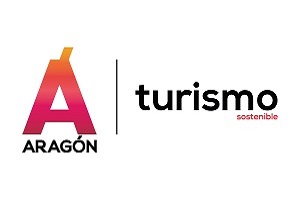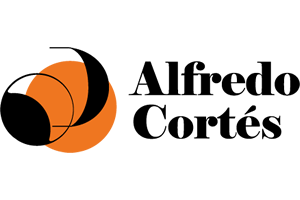Marta Baselga, an engineer from Zaragoza with a PhD in Biomedical Engineering and Medicine from the University of Zaragoza, is the head of the research project of the Institute for Health Research of Aragon (ISS Aragon) that has developed a coating based on silver nanoparticles for face masks that inactivates the coronavirus. The Aragonese researchers have also incorporated a second virucide into the polypropylene fibres of the masks and achieved a virus inactivation efficiency of 99.99%.
Marta, how did this research come about?
It came about before the summer of 2020. We realised that, after confinement, the use of surgical masks was widespread in the population. Having studied this use and the protection of surgical masks, we realised that it was not the best option for use in enclosed spaces with many people. People use it because it is the most comfortable and affordable mask, but it is not the one with the highest filtration capacity. So we tried to address that problem, and looked for ways to offer more protection to the user.
 Why did you choose nanosilver?
Why did you choose nanosilver?
I had been involved in research related to advanced materials and nanoscience for some time. We came up with the idea of developing a coating based on silver nanoparticles because of their broad-spectrum antimicrobial capacity. We were looking for a project that would allow a notable improvement in the masks and, at the same time, would not take too long in the laboratory, in order to reach society as soon as possible. In this sense, silver has been widely used in the development of surgical instruments, prostheses or wound dressings. So we investigated how we could apply this material at the nano-scale as a coating on the polypropylene fibre layer of the mask (spunbond). Choosing the outer layer as the coating material allowed us to expose the nanosilver to atmospheric moisture on the one hand, and to separate it from the surface of the face on the other.

What is different about this research?
Our development has been validated with the “live” virus isolated from a covid patient, and with full infectious capacity, by the team of Julián Pardo, ARAID researcher at the University of Zaragoza and member of IIS Aragón. In other words, we have not used a “virus substitute”, as on other occasions.
What is achieved with this new layer?
It is important to differentiate between filtration and inactivation of the virus. Filtration cleans the air to be breathed, while virus inactivation occurs when the virus comes into contact with this layer of the mask. In other words, inactivation efficiency is not the same as filtration efficiency and is therefore not equivalent to an FFP type mask. The nanosilver coating is proven to be more than 99.99% effective in inactivating the virus, but it does not increase retention efficiency. However, the material we have developed can be applied in masks of superior efficiency.
 Does increasing the number of layers in the mask hinder breathability?
Does increasing the number of layers in the mask hinder breathability?
No. This is known as pressure drop. It is a nano-scale layer, we have been working with particles between 5 and 10 nm. To give you an idea, 1 millimetre is equivalent to 1,000 microns and 1,000,000,000 nanometres. Because it is such an extremely thin layer, for polypropylene fibres measuring around 20 microns in diameter, the coating is negligible. The other day, they made an analogy of this with gold leaf. And I thought it was a good one, it would be something like that.
The development of the material has been tested on surgical masks as they are the most commonly used in the population.
Can this material be applied to anything other than face masks?
We have only developed it for polypropylene fibres, which is the typical material for face masks. We decided to start with that, but there would be no problem in continuing the line of research. It could be applied to other polymers, i.e. plastic materials such as bus seat covers, mobile phone covers, paints, plastic door knobs like those in hospitals… In fact, we are currently testing its incorporation in other polymeric materials.
Is there interest in commercialising it on a large scale?
Several national mask manufacturers and companies from the textile industry have shown interest in the material to include it in their masks. We are giving ourselves some time to reach agreements. The truth is that the industrialisation process is very easy. The only thing that can be limiting is the production of the silver particles, but there are companies that commercialise them to order. It is easily scalable and does not require a large initial investment for the company. The move to commercialisation should not be a financial problem.
Would introducing this improvement mean a large increase in the unit cost of the masks?
Not much for the field we are talking about, because we are talking about nanotechnology. We have calculated that the cost to the laboratory is a few cents per mask. I am not a mask manufacturer and I don’t know how much this will affect the marketing. Our intention is to reach as many people as possible, we have sought to provide a response to society.
Which mask do you recommend?
There is a fundamental difference between surgical masks and FFP type masks: particle retention capacity. FFP2 and FFP3 type masks have high particle filtration (95 and 99%, respectively). On the other hand, surgical type masks also have high filtration efficiencies (95% for type I and 98% for type II), but this is bacterial filtration efficiency (BFE). This means that they are very efficient at filtering large particles (larger than 1 micron). However, their efficiency in retaining small particles (such as virus diameter) is limited. Among other things, this is due to their poor adaptation to the surface of the face.
Among the usual face masks, the safest is the FFP3, I have no doubt about that. But from a social perspective, I have not used it, because it is better to have this protection in a health centre and not to create a shortage. The ideal is to wear a well-fitted FFP2 and, in the street, if there are no crowds and a strict interpersonal distance is maintained, a surgical mask is sufficient protection.
The pandemic has been very fruitful for you?
In March and April, we were looking for a response to the health sector in this country, which had major problems of shortages. We started studying filter media and launched an emergency mask in April that could be made from two medical devices that could be found in any hospital: an anaesthesia equipment filter and an aerosol therapy mask. We talked to Salud and they bought units of the materials which were distributed so that they could be made in the hospitals. In addition, this invention reached other autonomous communities and other parts of the world, such as Mozambique. We also devised bracelets to dispense antiseptic for hospitals and for general use. Soon we are going to present a circular economy project and masks. You only have to crunch the numbers to see the enormous amount of kilos of polypropylene that are being discarded in a single use and are difficult to recycle. We have also worked on an international cooperation project with the Philippines, through the NGO (Phileos) that was co-founded by Dr. Antonio Güemes, my thesis supervisor and essential partner in these research adventures.
IIS Aragón has also investigated the importance of air renewal.
During this time we have also worked to determine the existence of aerosols with viable viruses in the Hospital Clínico Lozano Blesa and we have launched the CoviBlock initiative, which began with surface disinfection and evolved to CO2 monitoring. Technical and health researchers aim to define low-risk areas for Covid-19 infection. In the CO2 line, we have created a pioneering seal in Spain, called “We are CoviBlock”. This seal is implanted in the entity that requests it. But not before going through a characterisation of the distribution of CO2 in their spaces, the implementation of preventive measures and the acceptance of being monitored remotely and permanently by our team. Through CO2 meters with IoT technology, we can alert the person in charge of the entity that its CO2 levels have exceeded the recommended limits at any time. Forced ventilation is then required. This seal would be a quality mark that would reassure users that they are not exposed to a high risk of contagion in relation to aerosol transmission. We have already started to implement it in some institutions. Researchers Juan José Alba and Alberto Jiménez Schuhmacher, who I consider to be aerosol gurus, are also coordinators of the project. They are part of the international group “Aireamos”.
*The project has been developed from the Institute for Health Research of Aragon (ISS Aragon) together with Manuel Arruebo and Victor Sebastian, professors of the Department of Chemical Engineering and Environmental Technologies of the University of Zaragoza, and researchers of INMA and Ciber-BBN. The group of Julián Pardo, ARAID researcher at the University of Zaragoza and member of IIS Aragón, has participated.














